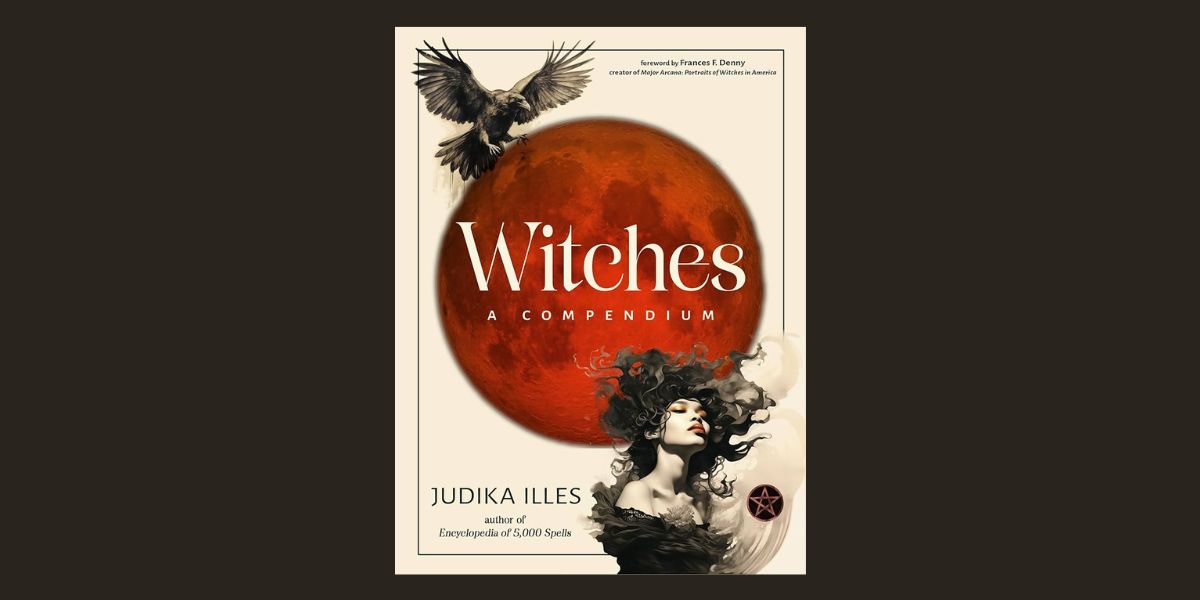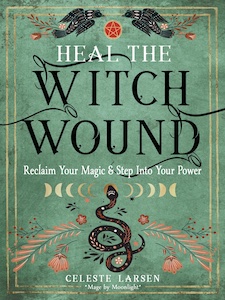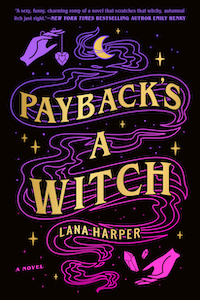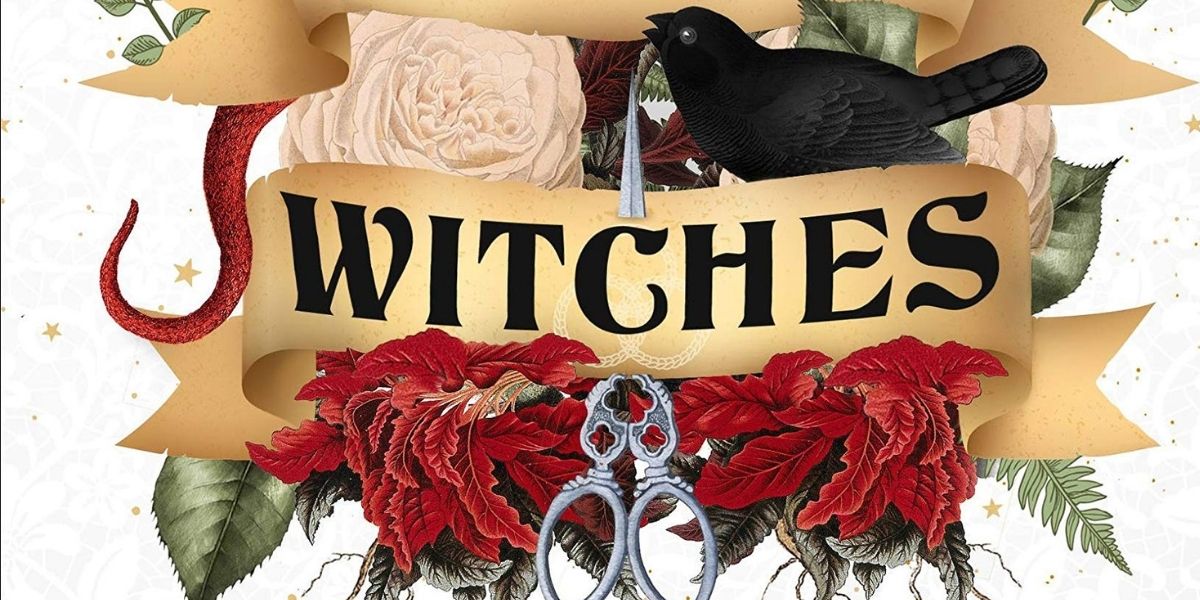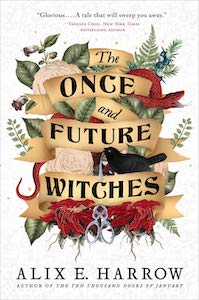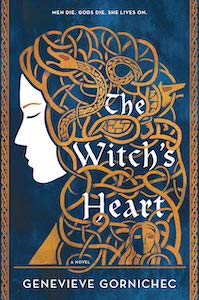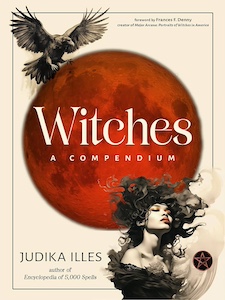
Witches: A Compendium, by Judika Illes
Weiser Books, 1578638577, 240 pages, October 2024
Autumn has arrived, and I think we can all agree.. It’s officially the season of the witch! For those who are feeling drawn to witches, whether through fictional tales or their own witchcraft practice, Judika Illes’ latest book Witches: A Compendium offers a fascinating exploration of the subject, from ancient times to modern day. This comprehensive guide covers a range of witchcraft topics, from famous witches to the best witch-travel destinations.
“The world of witches is filled with passion, magic, high spirits, and joy. It is a world where the sacred is ever-present, a world in which even the most mundane objects possess deep spiritual significance. The world of witches is a world of wonder in which every color, incident, creature, sight, or sound has some sort of magical import.”1
Illes does an excellent job of presenting a diverse range of perspectives on witchcraft. Chapters are dedicated to types of witches, witchcraft tools, animal familiars, various well-known witches (famous ones, fictional ones, divination witches, and those who have been persecuted for their practice). She includes stories and practices from different cultures, highlighting the universal appeal and varied interpretations of witchcraft around the world. This inclusivity is a refreshing aspect of the book, as it acknowledges and respects the wide array of traditions and beliefs associated with witchcraft.
For each topic in the compendium, there’s anywhere from one paragraph to two pages dedicated to the subject. Illes’ writing style is engaging and accessible. She excels in writing insightful profiles that bring these individuals to life, offering readers a glimpse into their lives and the culture during the time they lived. Some of my favorites covered include Tamoamo-no-Mae, Hulda, and Kybele. I also loved the focus on fictional witches, such as Agatha Harkness, whose new TV show I just started watching on Disney+; Illes writing is so up-to-date that it mentions this new Marvel show, along with the recent WandaVision.
I was also pleasantly surprised to see that Illes included quite a few men in this compendium. Of course, there’s the male founders of certain traditions, such as Alexandrian Wicca and The Clan of Tubal Cain, who were influential in the spread of modern witchcraft. But she also looks to famous magicians and sorcerers of the past too, such as Abei no Seimei, Franz Bardon, Count Alessandro di Cagliostro, and Dr. Leo Martello. This inclusion gives a very balanced perspective on witchcraft, offering a full picture that counters stereotypes of witches always being old hags or devious young women.
The chapters on the tools, crafts, and animals associated with witchcraft are especially beneficial for readers to learn more about different practices. Illes covers tools like dolls, mirrors, runes, and wands, along with crafts of the trade such as dowsing, scrying, and astrology. The chapter “Animal Witches and Witches’ Animals” is loaded with information about the roles various animals have in witchcraft practices worldwide. I was fascinated to learn:
“European itches were accused of riding wolves or bates; African witches ride galloping hyenas, the animal most closely identified with witches throughout Africa.”2
And, if after making it through most of this book you are wondering if you’re a witch, Illes’ final chapter helps to answer this question. She includes lore that indicates being a witch, such as being the seventh-born son or daughter, as well as having a witch-mark or disliking salt. She also notes personality traits like “you have an affinity for wild nature, a love for the world’s wild, untamed places”3 and “you possess an independent streak: you don’t like being told what you can’t do, can’t learn, can’t known, can’t read, or where you can’t go.”4
Finally, the visual aspect of the book is also worth mentioning. Witches is beautifully illustrated, with images that complement the text and enhance the reader’s experience. The illustrations add an extra layer of enchantment to the book, making it not only informative but also a pleasure to look at.
Overall, Witches: A Compendium is a great read for anyone interested in the world of witchcraft. It is comprehensive, well-researched, and beautifully presented. Whether you are a seasoned practitioner or a curious newcomer, this book offers valuable insights and practical knowledge that will deepen your understanding of witchcraft and its enduring allure.
And if you enjoy this book, Illes has quite a few other informative books published, including Encyclopedia of 5,000 Spells, Encyclopedia of Spirits, The Element Encyclopedia of Witchcraft, and Encyclopedia of Mystics, Saints, & Sages, along with The Weiser Field Guide to Witches and The Weiser Field Guide to the Paranormal.
Alanna Kali is an astrologer, numerologist, and pioneer spirit that loves to explore life through the lens of depth psychology. She has a passion for studying the humanities and social trends. Her academic work is centered upon reuniting body, mind, and spirit through eco-psychology. She loves reading, spending time in nature, and travel.
